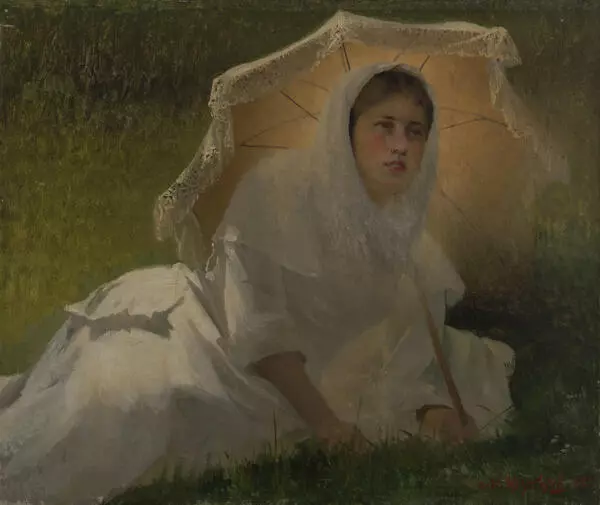The Ostrogozhsk Museum houses an oval female portrait painted by the artist Mikhail Lazarevich Shcherbatov. It depicts a Russian woman with a broad face and a light flush. Her eyes are full of thought and slight sadness, with dark eyebrows above them resembling two wings. For many years, her name remained a mystery. However, the information from archives, books, and letters, as well as the research of the art expert Sosedko helped to identify her as Varvara Aleksandrovna Kashevarova-Rudneva — the first woman in Russia to become a doctor and to have completed graduate medical education.
Varvara grew up in an impoverished village in Belarus. She became an orphan at an early age and was forced to work as a domestic servant and laundry girl. Only at the age of 14, she learned to read and secretly bought a slate board to master writing. With every new book, she became more and more interested in education and science. Having grown up, Varvara married the wealthy merchant Kashevarov. Finally, she could live a comfortable life and hoped to receive an education. However, her husband was dead set against her aspirations: he prohibited her from studying and forced her to stay at home. After some time, Varvara developed a nervous disorder and ended up in a hospital. After recovering, she did not return home. Several months after being discharged from the hospital, Varvara Kashevarova got a degree as a midwife, having amazed the examiners with her knowledge. After overcoming a lot of difficulties, in 1863, Varvara Kashevarova finally managed to enroll in the St. Petersburg Surgical Academy and soon went to study abroad. As a student, she interned at obstetric clinics in Prague, Vienna, Berlin, Bonn, and other European cities. In 1868, she became the first woman to graduate from the Military Medical Academy and moreover was awarded a gold medal.
In 1878, Varvara Aleksandrovna Kashevarova-Rudneva, the widow of Professor Rudnev (the founder of anatomic pathology and experimental oncology in Russia), was forced to leave St. Petersburg because of being bullied by society. Time after time, St. Petersburg newspapers published cruel lampoons and caricatures of Varvara Aleksandrovna. A Doctor of Medicine, she went to the countryside and resided at the Goly Yar farmstead in Voronezh Governorate. In March 1886, the farmstead, where she worked as a country practitioner, burned down, and she returned to St. Petersburg for some time. After 1888, Varvara Aleksandrovna lived and worked in Staraya Russa where she died on April 30, 1899.
Varvara grew up in an impoverished village in Belarus. She became an orphan at an early age and was forced to work as a domestic servant and laundry girl. Only at the age of 14, she learned to read and secretly bought a slate board to master writing. With every new book, she became more and more interested in education and science. Having grown up, Varvara married the wealthy merchant Kashevarov. Finally, she could live a comfortable life and hoped to receive an education. However, her husband was dead set against her aspirations: he prohibited her from studying and forced her to stay at home. After some time, Varvara developed a nervous disorder and ended up in a hospital. After recovering, she did not return home. Several months after being discharged from the hospital, Varvara Kashevarova got a degree as a midwife, having amazed the examiners with her knowledge. After overcoming a lot of difficulties, in 1863, Varvara Kashevarova finally managed to enroll in the St. Petersburg Surgical Academy and soon went to study abroad. As a student, she interned at obstetric clinics in Prague, Vienna, Berlin, Bonn, and other European cities. In 1868, she became the first woman to graduate from the Military Medical Academy and moreover was awarded a gold medal.
In 1878, Varvara Aleksandrovna Kashevarova-Rudneva, the widow of Professor Rudnev (the founder of anatomic pathology and experimental oncology in Russia), was forced to leave St. Petersburg because of being bullied by society. Time after time, St. Petersburg newspapers published cruel lampoons and caricatures of Varvara Aleksandrovna. A Doctor of Medicine, she went to the countryside and resided at the Goly Yar farmstead in Voronezh Governorate. In March 1886, the farmstead, where she worked as a country practitioner, burned down, and she returned to St. Petersburg for some time. After 1888, Varvara Aleksandrovna lived and worked in Staraya Russa where she died on April 30, 1899.


